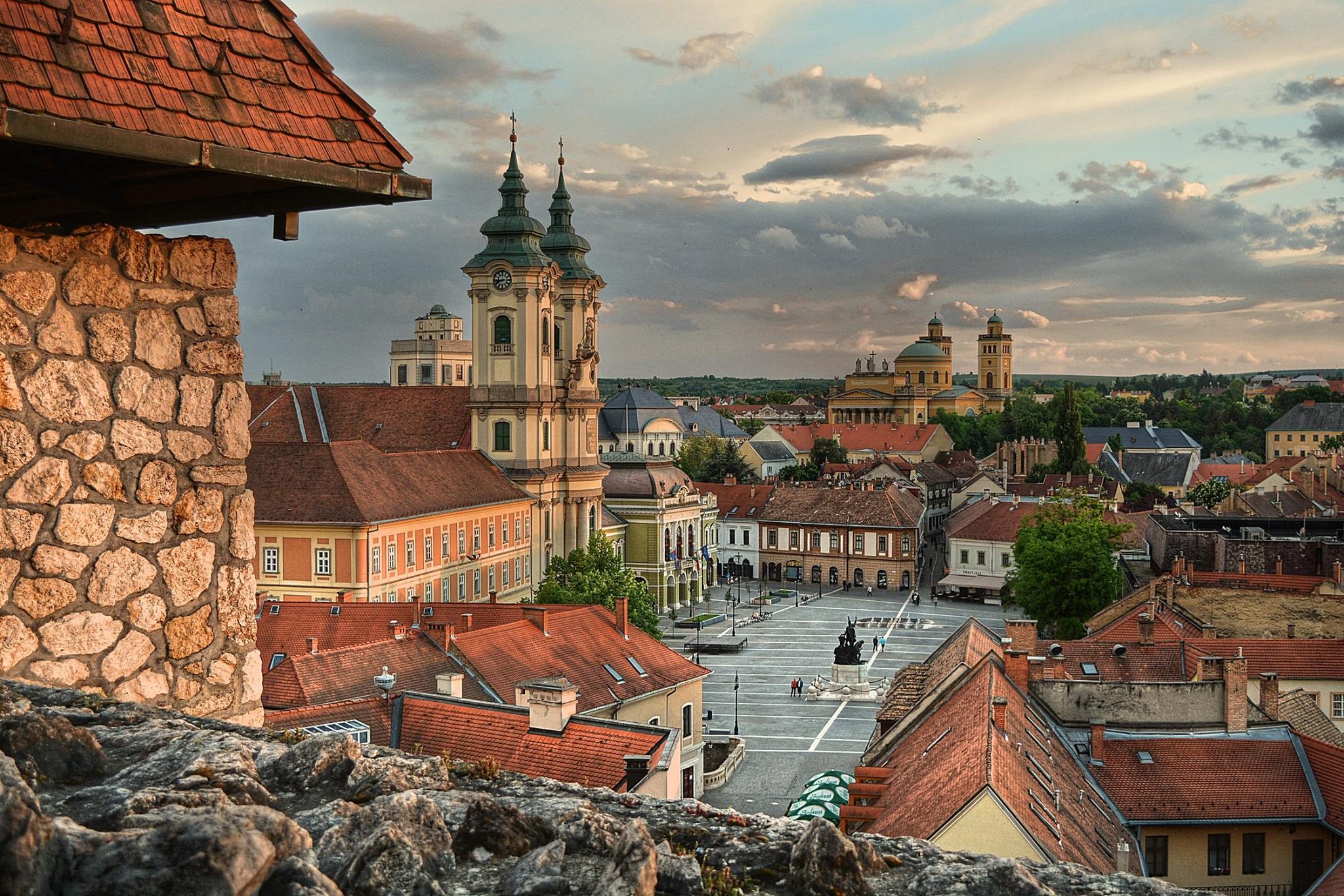Eger
 Eger is the county seat of Heves, and the second largest city in Northern Hungary (after Miskolc). Eger is best known for its castle, thermal baths, baroque buildings, the northernmost Ottoman minaret, dishes and red wines. Its population according to the census of 2011 makes it the 19th largest centre of population in Hungary. The town is located on the Eger Stream, on the hills of the Bükk Mountains. The origin of its name is still unknown. One suggestion is that the place was named after the alder ("égerfa" in Hungarian) which grew so abundantly along the banks of the Eger Stream. This explanation seems to be correct because the name of the town reflects its ancient natural environment, and also one of its most typical plants, the alder, large areas of which could be found everywhere on the marshy banks of the Stream although they have since disappeared.
Eger is the county seat of Heves, and the second largest city in Northern Hungary (after Miskolc). Eger is best known for its castle, thermal baths, baroque buildings, the northernmost Ottoman minaret, dishes and red wines. Its population according to the census of 2011 makes it the 19th largest centre of population in Hungary. The town is located on the Eger Stream, on the hills of the Bükk Mountains. The origin of its name is still unknown. One suggestion is that the place was named after the alder ("égerfa" in Hungarian) which grew so abundantly along the banks of the Eger Stream. This explanation seems to be correct because the name of the town reflects its ancient natural environment, and also one of its most typical plants, the alder, large areas of which could be found everywhere on the marshy banks of the Stream although they have since disappeared.The German name of the town: Erlau=Erlen-au (elder grove) also speaks in favour of this supposition. And there is another theory which says that Eger's name comes from the Latin word: "ager" (earth). This theory comes from more recent researchers[who?] who think that during the 11th and 12th centuries settlers with a Walloon origin ("latins" in Hungarian) moved to this territory. The basin of Eger and the hilly region around it have always been very suitable for human settlements, and there are many archaeological findings from the early ages of history, which support this fact. The other names of the town are in Latin as Agria, in Serbian and Croatian as Jegar / Јегар or Jegra / Јегра, in Czech and Slovene language as Jager, in Slovak language as Jáger, in Polish as Jagier, and in Turkish as Eğri.
(Wikipedia)